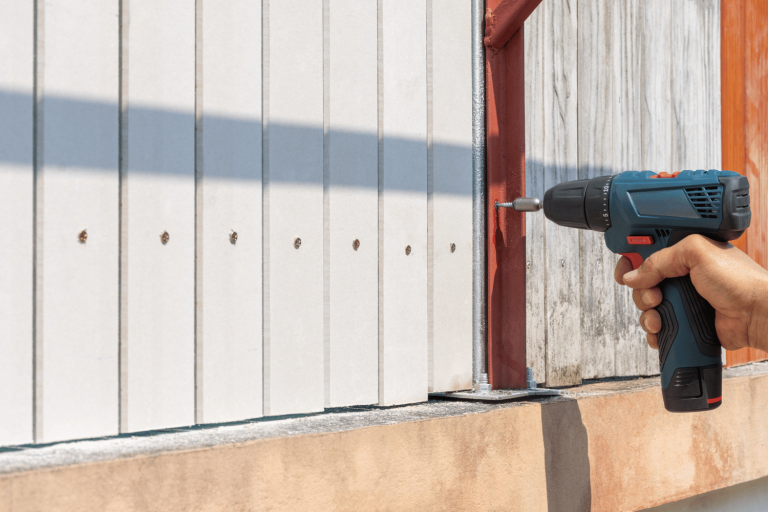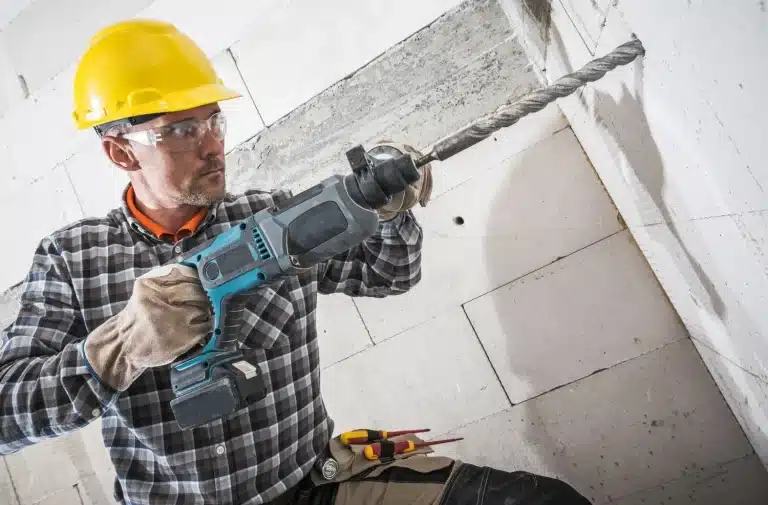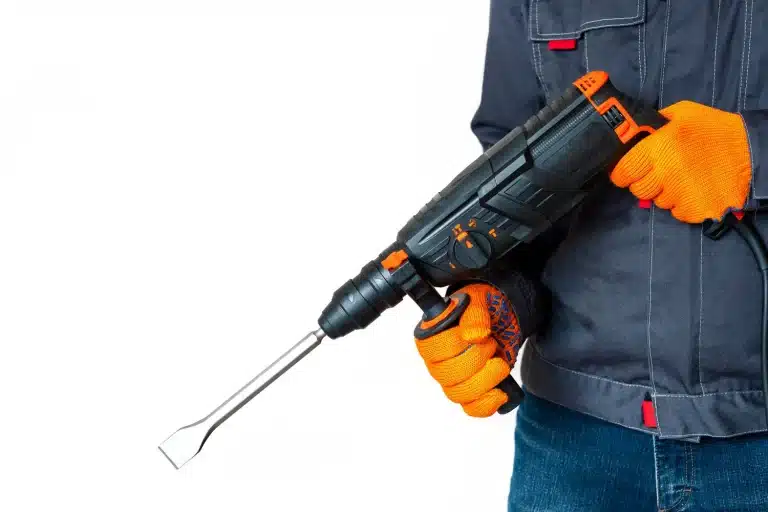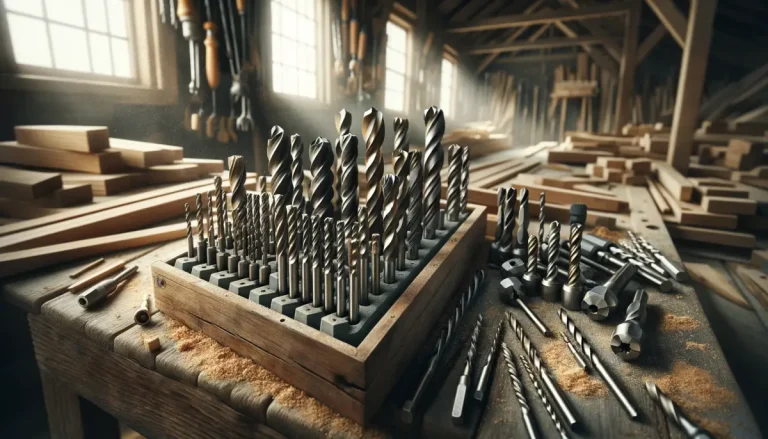How Does an Impact Wrench Work? Revealing the Magic
Impact wrenches are powerful tools that have become indispensable in various industries, especially automotive repair and construction. They are designed to quickly and efficiently tighten or loosen nuts and bolts with minimum effort. These high-torque tools have revolutionized the way professionals and DIY enthusiasts tackle challenging tasks, making them a must-have in any toolbox.
While impact wrenches may seem like simple tools, understanding how they work is essential for utilizing them effectively and safely. By gaining insights into their inner mechanisms and operation, you’ll be able to maximize their performance, select the right impact wrench for your needs, and avoid potential mishaps or damage.
In this article, we will take a closer look at the fascinating world of impact wrenches and explore how they work. We’ll delve into the mechanics that enable these tools to generate immense torque, examine the different power source options available, and discuss the socket and anvil system. So, let’s dive into the workings of an impact wrench and uncover the secrets behind their exceptional performance.
What Exactly is an Impact Wrench?
An impact wrench is a powerful tool designed to quickly and effortlessly tighten or loosen nuts, bolts, and fasteners. It utilizes a combination of rotational force and concussive blows to deliver high torque output. With their remarkable strength, impact wrenches excel at tackling heavy-duty tasks that would otherwise be challenging or time-consuming with traditional wrenches.
Key components and features
Impact wrenches consist of several important components that work together to achieve their impressive performance. The primary components include a motor, a transmission system, an impact mechanism, and a socket and anvil system. These components collaborate harmoniously to generate immense rotational force, allowing you to effortlessly handle stubborn fasteners.
In terms of features, impact wrenches often offer a variable speed trigger, allowing you to adjust the tool’s rotational force to match the requirements of different tasks. Additionally, many models come equipped with forward and reverse functionality, enabling both tightening and loosening operations.
How is an Impact Wrench Different from Other Tools?
Impact wrenches are often compared to other power tools such as drills, impact drivers, and traditional wrenches. While they share similarities, impact wrenches possess distinct characteristics that set them apart. Unlike drills, which primarily provide rotational force, impact wrenches combine rotational force with concussive blows, making them more suitable for heavy-duty applications where high torque is required.
Compared to impact drivers, the concussive blows of impact wrenches unleash much more torque. While an impact driver can drive long screws and small bolts, an impact wrench is more suitable for large fasteners and rusted, stuck bolts.
Furthermore, compared to traditional wrenches, impact wrenches offer significant advantages in terms of speed and efficiency. With an impact wrench, you can complete tasks in a fraction of the time it would take with manual wrenches, saving both time and effort.
By understanding the unique definition, purpose, components, and differentiating features of impact wrenches, you’ll gain a deeper appreciation for their capabilities and recognize why they are indispensable tools in various industries. Now that we’ve explored the basics, let’s dive deeper into the mechanics behind how an impact wrench generates such remarkable torque.

The Mechanics of an Impact Wrench
The motor and transmission system
At the heart of an impact wrench lies a powerful motor that drives its operation. The motor converts electrical or pneumatic energy into rotational force, providing the initial power required for the tool’s performance. Depending on the type of impact wrench, the motor can be electrically powered or driven by compressed air.
The rotational force generated by the motor is then transmitted to the output shaft through a transmission system. This system consists of gears and other mechanisms that amplify the rotational speed and torque, allowing the impact wrench to deliver impressive power to the fastener.
The impact mechanism
What truly sets an impact wrench apart from other power tools is its unique impact mechanism. This mechanism enables the tool to deliver both rotational force and concussive blows, making it highly effective in loosening or tightening stubborn fasteners.
The impact mechanism is typically composed of a hammer, anvil, and an impact mechanism housing. As the motor rotates the hammer, it compresses a spring within the impact mechanism housing. When the hammer reaches a certain position, it releases from the spring, creating a powerful impact against the anvil.
The impact produced by the hammer striking the anvil generates a high-torque impulse that is transferred to the fastener, allowing it to loosen or tighten. This combination of rotational force and sudden impacts makes an impact wrench incredibly efficient, even in challenging scenarios where traditional wrenches may struggle.
The hammer and anvil design
The hammer and anvil design is a fundamental element of an impact wrench. The hammer is usually shaped as a small metal mass that moves within the impact mechanism housing, while the anvil is a stationary component that receives the impacts from the hammer.
The hammer and anvil are precisely engineered to deliver maximum efficiency and durability. They are designed to withstand the repetitive high-impact forces generated during the operation of the impact wrench. The impact surfaces of the hammer and anvil are often hardened to ensure longevity and minimize wear.
By employing the hammer and anvil design, impact wrenches can generate immense torque and handle demanding tasks with ease. This mechanism, combined with the motor and transmission system, forms the backbone of an impact wrench’s exceptional power and performance.
Now that we’ve explored the mechanics of an impact wrench, let’s delve into how it harnesses these mechanisms to generate impressive torque and accomplish a wide range of applications.

How Does an Impact Wrench Generate Torque?
Start with Rotational Force
Rotational force plays a significant role in how an impact wrench generates torque. The motor of the impact wrench rotates the output shaft, which is connected to the socket or tool attachment. As the output shaft spins, it exerts rotational force on the fastener, attempting to either tighten or loosen it.
The rotational force alone, however, may not be sufficient to tackle stubborn or tightly fastened nuts and bolts. This is where the unique design of an impact wrench comes into play.
Add Concussive Blows
In addition to rotational force, impact wrenches utilize concussive blows to deliver exceptional torque. When the impact mechanism is activated, the hammer strikes the anvil with a series of rapid, high-energy impacts. These impacts are designed to deliver sudden, powerful blows to the fastener, enhancing the wrench’s effectiveness.
The concussive blows create a pulsating effect that helps break loose rusted or overtightened fasteners. This repeated striking action, combined with the rotational force, generates a remarkable amount of torque. The impact mechanism’s rapid succession of impacts enables the wrench to overcome resistance and apply significant force to the fastener, ensuring successful operation in even the most challenging scenarios.
Benefits of high torque output
The high torque output produced by an impact wrench offers several advantages. Firstly, it allows for rapid and efficient completion of tasks, saving valuable time and effort. Fasteners that might require considerable force or time with manual wrenches can be effortlessly tightened or loosened with the power of an impact wrench.
Secondly, the high torque output of an impact wrench contributes to increased accuracy. The controlled bursts of force exerted by the impact mechanism ensure precise and secure fastening, minimizing the risk of overtightening or undertightening.
Additionally, the high torque output enables an impact wrench to handle heavy-duty applications with ease. From automotive repair to industrial construction, impact wrenches are relied upon to tackle demanding tasks that require substantial force.
Understanding how an impact wrench generates high rotational torque not only enhances your knowledge of the tool but also allows you to appreciate its unique capabilities. The combination of rotational force and concussive blows makes impact wrenches versatile, efficient, and indispensable in various industries. Now that we’ve explored the torque-generating mechanisms, let’s move on to discussing the different power source options available for impact wrenches.
Power Source Options for Impact Wrenches
Pneumatic impact wrenches
Pneumatic impact wrenches, also known as air impact wrenches, rely on compressed air as their power source. These wrenches are commonly found in automotive repair shops and industrial settings where access to compressed air is readily available. Pneumatic wrenches are known for their exceptional power and torque output, making them ideal for heavy-duty applications.
To use a pneumatic impact wrench, a connection to an air compressor is required. The compressed air is delivered through a hose and into the tool, where it powers the motor and drives the wrench’s operation. An air impact wrench offers a continuous power supply, allowing for extended use without the need for recharging or battery replacements.
Corded electric impact wrenches
Corded electric impact wrenches are powered by electricity, typically through a power cord connected to an outlet. These wrenches provide a convenient and reliable power source, making them suitable for a wide range of applications. With a consistent power supply, corded electric impact wrenches offer consistent performance and high torque output.
One of the advantages of a corded electric impact wrench is that it eliminates the need for batteries or recharging. As long as there is access to an electrical outlet, these wrenches can be used continuously without worrying about power depletion. However, the limitation lies in the requirement of being near an outlet or using extension cords for mobility.
Cordless battery-powered impact wrenches
Cordless battery-powered impact wrenches have gained popularity due to their portability and convenience. These wrenches are powered by rechargeable batteries feeding a brushless motor, offering freedom of movement without being restricted by cords or the need for an external power source. A cordless impact wrench is a versatile tool that can be used in various environments, including remote job sites or areas without electrical outlets.
The batteries used in cordless impact wrenches come in different voltages, which directly affects their power and torque output. Higher voltage batteries generally provide more torque, making them suitable for demanding tasks. It’s important to consider the battery life and the availability of spare batteries when working with a battery-powered impact wrench.
Final Thoughts
Throughout this article, we have delved into the inner workings of an impact wrench, uncovering the mechanics that allow it to generate impressive torque and tackle even the toughest fasteners. We explored the key components such as the motor, transmission system, impact mechanism, hammer and anvil design, and the socket and anvil system. By understanding these elements, we gained insight into how an impact wrench harnesses rotational force and concussive blows to deliver exceptional power and efficiency.
We also discussed the different power source options for impact wrenches, including pneumatic, corded electric, and cordless battery-powered models. Each option has its advantages and limitations, and selecting the right power source depends on your specific needs, available resources, and desired mobility.
Armed with this knowledge, I encourage you to explore the world of impact wrenches and utilize them effectively in your projects. Whether you’re an automotive enthusiast spinning lug nuts, a DIY enthusiast, or a professional in the construction or maintenance industry, an impact wrench can be a game-changer in your toolkit. Its ability to effortlessly loosen or tighten stubborn fasteners, its versatility in handling different sizes and types of fasteners, and its time-saving efficiency make it an invaluable tool to have by your side.
Rev up Your Work with the Best Corded Impact Wrench
Grab the Best 3/8 Impact Wrench and Knock Off Those Stubborn Bolts
Don’t Get Stuck Wrenching – Find the Best Cordless Impact Wrench for Changing Tires







